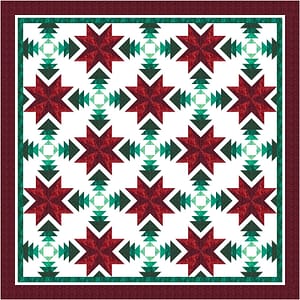Just like in cooking, you want to make sure you have all of the ingredients before you get started. And just like in cooking, you want to know your tools are ready for use. Here are a few tips for tool success.
1.Pressing
If you use star or fusible, your iron may need a little TLC. While the iron is cold, take a time to remove the build-up on the plate. I have found a magic eraser works really well. Then, follow the manufacturer’s instructions for descaling. My iron needs a good steam session over the sink to loosen the gunk.
You iron is only half the equation. Make sure you have enough starch or wrinkle release for your next project if you need it.
If you are using fusible, starch may not be your best friend. Starch can prevent the fusible from sticking as well as it could. Speaking of sticking as well as things should. Now is a good time to test your fusible. The two factors to test are time and temperature for the fusible and fabric you are going to use. Take a few scraps and make a test patch. I have found that too hot or too long, will scorch or overmelt the fusible, so it won’t stick. Too cool or too short of a time, the fusible won’t melt and won’t stick. So how do you tell the difference? Generally, fusible will look really shiny if it is too hot or grainy if too dull.
2.Cutting
Take a few minutes to change the blade of your rotary cutter to ensure accurate cuts. Dull blades can lead to uneven cuts, fraying and extra stress on you!
3.Measuring
Make sure you have the right rulers on hand. Ilike to my Creative Grids rulers because they are don’t slip. I have a variety of sizes, which takes some of the pain out of measuring. If I don’t have the exact size I need for a project, I like to use tape to highlight the necessary ruler line. This minimizes miscuts and frustration.
I also like to make my large cuts first. That allows me to use any excess for smaller cuts. It also minimizes the risk of running out of fabric if I make a mistake when cutting.
If I am using a specialty ruler, reading the instructions or watching a video may refresh my memory to ensure I use it properly. Sometimes, I even make a few test blocks so that I am comfortable with using the ruler before I cut into my good fabric.
4.Stitching
Before each project change the needle on your machine. That new needle should match your project. If you are working with adhesive or fusible, try a Teflon or non-stick needle. Dull needles can cause missed or dropped stitches. They can lead to wavy seams.
Clean your machine, especially under the bobbin case. And if your machine needs it, give it a decent lubrication. These will help your machine power through your stitches.
If you are using specialty stitches, make sure you have the right feet and thread. Then, test the stitches on scrap fabric of the same type and quality you will be using in your project. That will give you the ability to adjust tension and stitch size before you start.
Here I will give you a slightly embarrassing story. I picked a project with fusible applique and planned to use a blanket stitch. Easy peasy right? Well, my machine has TWO blanket stitches, one that jogs to the right and one that jogs to the left. When I started the project, I didn’t know this… So when I started sewing to secure the applique, I was very confused as to why my stitches weren’t catching…. it turns out, I picked the wrong one!
Even if you are stitching by hand, it is best to start with a new needle. Needles points dull, shafts bend, and eyes weaken. Having a needle snap while using it is no fun.
5. Materials
Verify your yardage. Check your stock of notions such as thread, stabilizer, fusible, batting or other special items. This is especially important for kits or seasonal fabrics. You don’t want to run out of a hard-to-find fabric mid-project! If you do realize you are short on fabric and can’t find any more, substitute something similar before you start. It will be less noticeable.
6. Gadgets
Read your pattern carefully, to see if special gadgets or techniques are needed. If they are needed, practice with them before starting the project. Not only will practice make perfect, but it should make the project go more smoothly and quickly!
Hopefully, these habits help your quilting.
Happy Quilting!
Laureen


